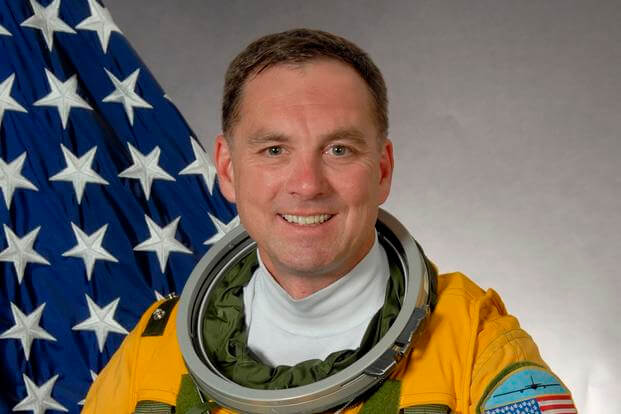A pilot who was new to flying the U-2 Dragon Lady spy plane attempted a stall maneuver before the two-seater training aircraft crashed in northern California, killing instructor Lt. Col. Ira S. "Shooter" Eadie.
An Accident Investigation Board report released Wednesday said the pilot -- interviewing for his "acceptance flight" to the U-2 program -- was practicing his "approach to stall" maneuver with Eadie when he put the aircraft into an unintentional second stall.
"During the recovery from the stall, the interviewing pilot's flight control inputs placed the aircraft into an unintentional secondary stall, which led to a sharp left wing drop and excessive nose-low attitude," stated the report, which was prepared by Air Combat Command.
The wing dipped between 70 and 80 degrees of its bank, and the nose 35 to 40 degrees below the horizon, the investigation found. As the aircraft approached the minimum uncontrolled ejection altitude, Eadie called for an immediate ejection.
"Eject, dude," Eadie said before he ejected his seat and struck the aircraft's right wing, resulting in fatal injuries.
The trainee pilot, who remains unidentified, sustained minor injuries during the crash and is now an active-duty U-2 pilot after completing additional training flights, according to Maj. A.J. Schrag, a spokesman for the command.
The accident occurred Sept. 20, 2016, during what's called an "acceptance flight" as part of the process to get a trainee acclimated to the aircraft, Schrag said.
During the practice run, the trainee was on his third approach to stall maneuver, Schrag said. In that move, the instructor pilot demonstrates the first stall, then the trainee mimics the maneuver. But on the student's third approach attempt, he unintentionally put the aircraft into another stall.
It was the pilot's first of three total flights designed to determine a trendline for how the pilot performs. Because the pilot was in the air for only about 10 minutes after takeoff before the crash, a proper trendline could not be established, Schrag said. Therefore, the pilot received three more interview flights and is now an active-duty U-2 pilot, he said.
The trainee, who completed Undergraduate Pilot Training, first earned pilot instrument qualification and mission qualification in the C-17A with the 58th Airlift Squadron at Altus Air Force Base, Oklahoma. He then became an aircraft commander in the C-17A in the 10th Airlift Squadron at McChord Air Force Base, Washington, in 2011 and attended Pilot Instructor Training and completed initial instructor training in the T-38C at Randolph Air Force Base, Texas, in 2014.
The two-seater U-2 trainer aircraft was assigned to the 1st Reconnaissance Squadron, part of the 9th Reconnaissance Wing, at Beale Air Force Base, California.
Both pilots ejected from the two-seater trainer around 9:05 a.m., shortly after taking off from the installation, which is located in a rural area in the north-central part of the state.
Beale first responders arrived at the crash site, about 20 miles west of the base near Sutter Buttes mountain range, at 9:59 local time, the report said. There were no injuries to personnel or civilians on the ground.
The aircraft was completely destroyed, with a government loss of approximately $32 million.
The base paused operations for 72 hours after the crash.
Eadie served in both the Navy and Air Force, with a combined service of 20 years.
"The purpose of this report was to identify the causes and contributing factors which may have contributed to the incident," said Brig. Gen. David S. Nahom, the investigation board president. "This was a terrible tragedy, and our heartfelt condolences go out to Lt. Col. Eadie's family."
-- Oriana Pawlyk can be reached at oriana.pawlyk@military.com. Follow her on Twitter at @Oriana0214.
Don't Miss a Single Military.com Story
To read the full article and get exclusive benefits, sign up today.
It’s FREE
Why am I seeing this? Visit our FAQs






























